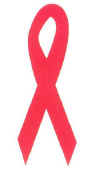|
|
the-south-asian.com January 2004 |
||||
|
January
2004 Hunza
and Balti Foreign
help to fight Sports Natural
Medicine People Short
story Books
Lehngas - a limited collection Books Between
Heaven and Hell
|
|
||||
|
by Gyan Marwah
Back in 1998 when Bill Gates gave $100 million to combat AIDS in India it was one of the biggest grants India had received to control the deadly disease. This year the Bill & Melinda Gates Foundation has upped that figure and donated an undisclosed amount to help prevent the spread of the disease. " Compared to any other disease, it is only AIDS that will get dramatically worse every year. Other problems don't grow but AIDS will overwhelm the medical fraternity" says Gates. HIV/AIDS is now spreading alarmingly in India. During 2002 the number of people infected rose to 4.58 million, up from 3.97 million in 2001. In just one year the number of infected people rose by 0.61 million. According to a study jointly done by Population Foundation of India [PFI] and Population Reference Bureau, if knowledge of the disease, preventive measures and counseling is not made universal, then India could see an epidemic similar to that in some of the African countries. " Because adequate efforts were not made to undo the stigma and discrimination related with HIV/AIDS in the early epidemic stages, the disease continued to grow silently and today it is the leading cause of death in Africa. Due to AIDS, life expectancy at birth is also expected to fall to 30 years by 2010 in some African countries. Already, child mortality is higher by 30 to 70 percent in AIDS-affected African countries," says Carl Haub, senior demographer in Population Reference Bureau. India has in fact taken action, says A.R. Nanda, Executive Director, Population Foundation of India. He adds that the extent of HIV/AIDS would have been worse if the country had not started to address the problem in 1986 when it was first detected. But the trends still indicate the need to accelerate the involvement of civil society in raising awareness about AIDS, particularly among the vulnerable sections, and in removing the social stigma currently associated with the disease." The total increase in HIV/AIDS cases worldwide in 2002 was 5 million of which India accounted for about 12 percent. In absolute terms, India is next to South Africa in terms of reported HIV/AIDS cases at 4.6 million against 5.1 million of South Africa. High Risk Groups The spread from the high-risk behaviour groups to the general populace is another key indicator that HIV/AIDs in India has reached epidemic proportions. The disease is no longer confined to high-risk behaviour groups such as intravenous drug users and female sex workers and their clients. The clients, particularly married males, act as the bridge groups, aiding and abetting the spread of HIV/AIDS into the general population in India. Over one percent of pregnant women now test positive for HIV at many testing sites. Women account for 26percent of the total reported cases, a figure that is likely to rise in the near future. Assessing the trends in high-risk groups, the study notes that testing for infection at sexually transmitted diseases [STD] clinics has revealed an alarming situation in many states. Even in Kerala, which is not considered a high prevalence state, more than two out of 100 STD patients tested positive for HIV. In some states, this figure was more than one in 10, and in a high-prevalence state like Andhra Pradesh, it was very high --- three in 10. The study observes that up to 50 percent of sex workers in sentinel sites are HIV positive. This is particularly alarming considering that only about 57 percent of clients of female sex workers reported consistent condom use as per the Behavioural Surveillance Survey 2001. These findings are of concern when viewed against the general awareness levels of HIV/AIDS in India. For example, while close to 90 percent people in urban areas have heard of AIDS, only about 72 percent of people in the rural areas know about it. Tellingly, the study also highlights low awareness levels of HIV/AIDS in heavily populated states as a "danger signal". About three out of four rural women in Bihar, Gujarat and Uttar Pradesh had never heard of HIV/AIDS. Preventive Measures With regard to preventive measures, three out of ten men and five out of ten women were not aware of the condomís protective value. Less than 30 percent of women in rural areas of Bihar, Gujarat, Uttar Pradesh and West Bengal were aware that HIV/AIDS could spread through blood transfusion. Only about 66 percent of women in urban areas but less than 50 percent in rural areas were aware of dangers of HIV-infected mothers breast feeding their children and possibly passing the infection on to the child. " Only 100 percent awareness of HIV/AIDS and how its spreads can be an effective safeguard against the menace. Much has been done, but more needs to be done to bring HIV/AIDS into the public arena," observed Mr. Nanda. The study funded by the Bill & Melinda Gates Foundation was designed to serve as an easy primer on HIV/AIDS with the national chart book published in English and Hindi. Additionally, separate fact sheets on six high-prevalence states [Andhra Pradesh, Karnataka, Maharashtra, Manipur, Nagaland and Tamil Nadu} are available in English and regional languages to increase awareness at the grassroots including local-self governing bodies, educational institutions and civil society development partners. Bill Gates lays great emphasis on proper tests and free distribution of condoms. " The AIDS vaccine is not very likely in the next decade. Till that comes there is a great need for prevention and precaution. Otherwise there will be an epidemic which will be hard to control." *****
|
|||||
| Copyright © 2000 - 2004 [the-south-asian.com]. Intellectual Property. All rights reserved. | |||||
| Home | |||||

